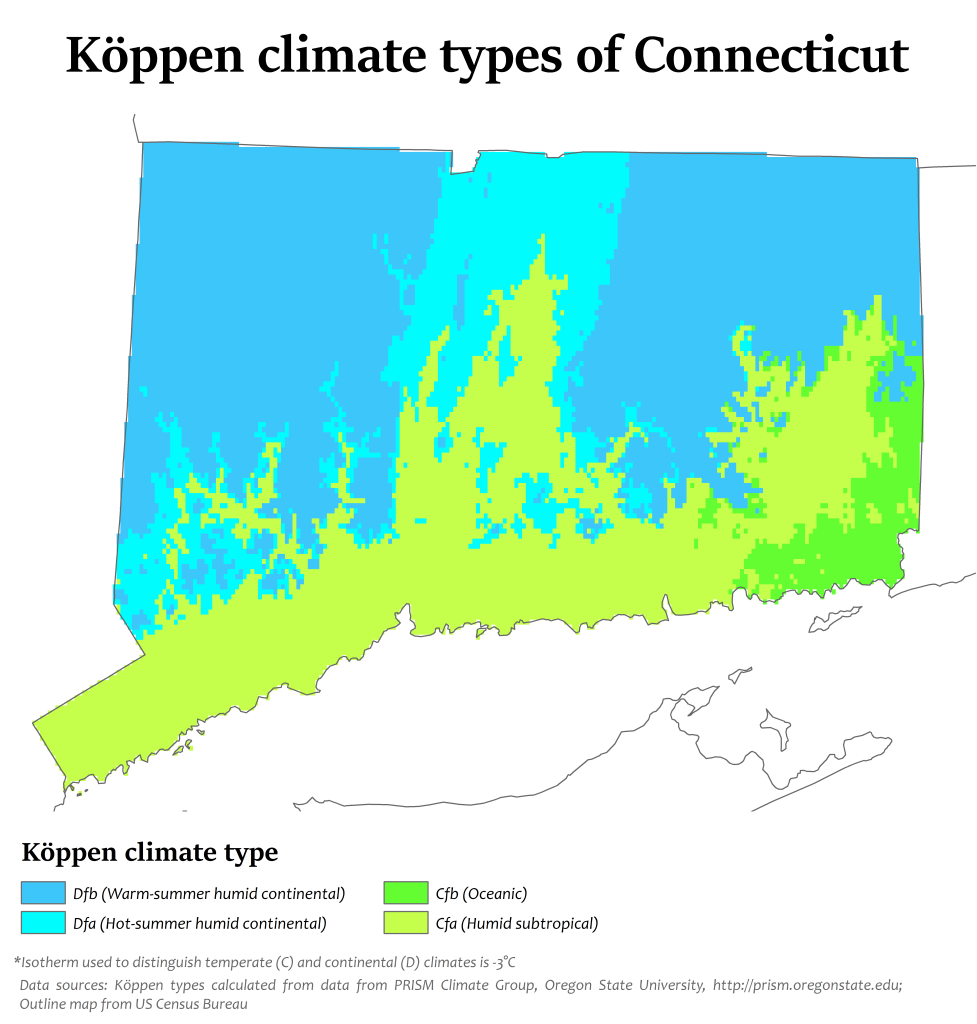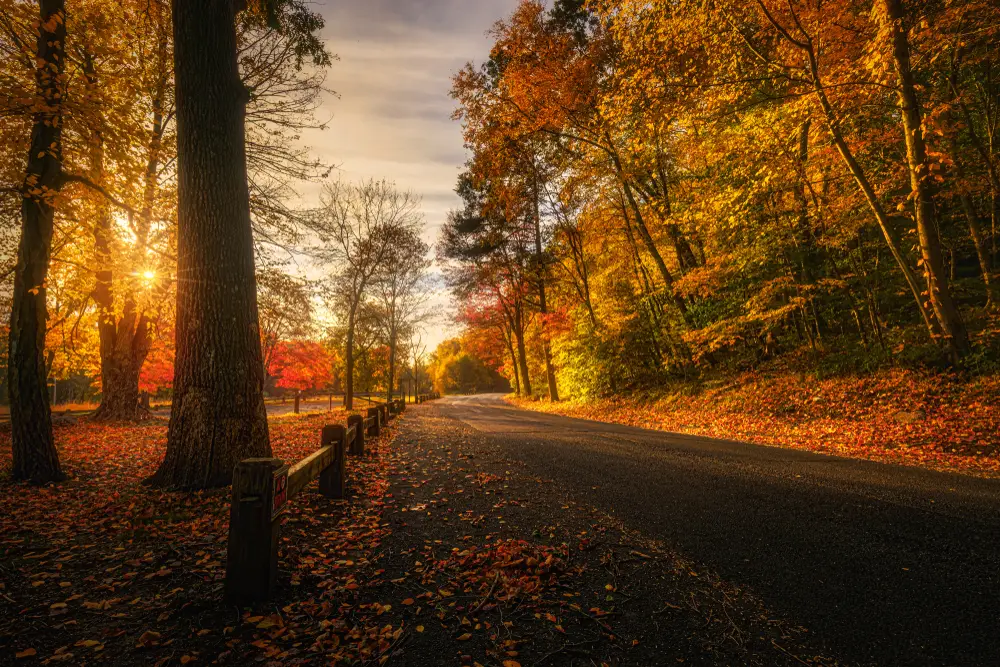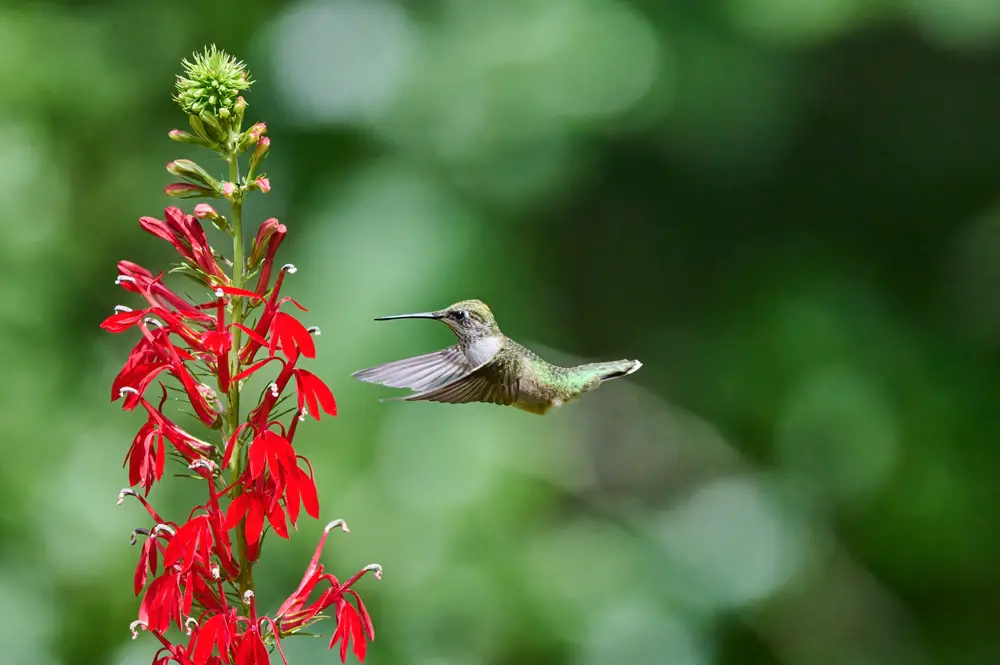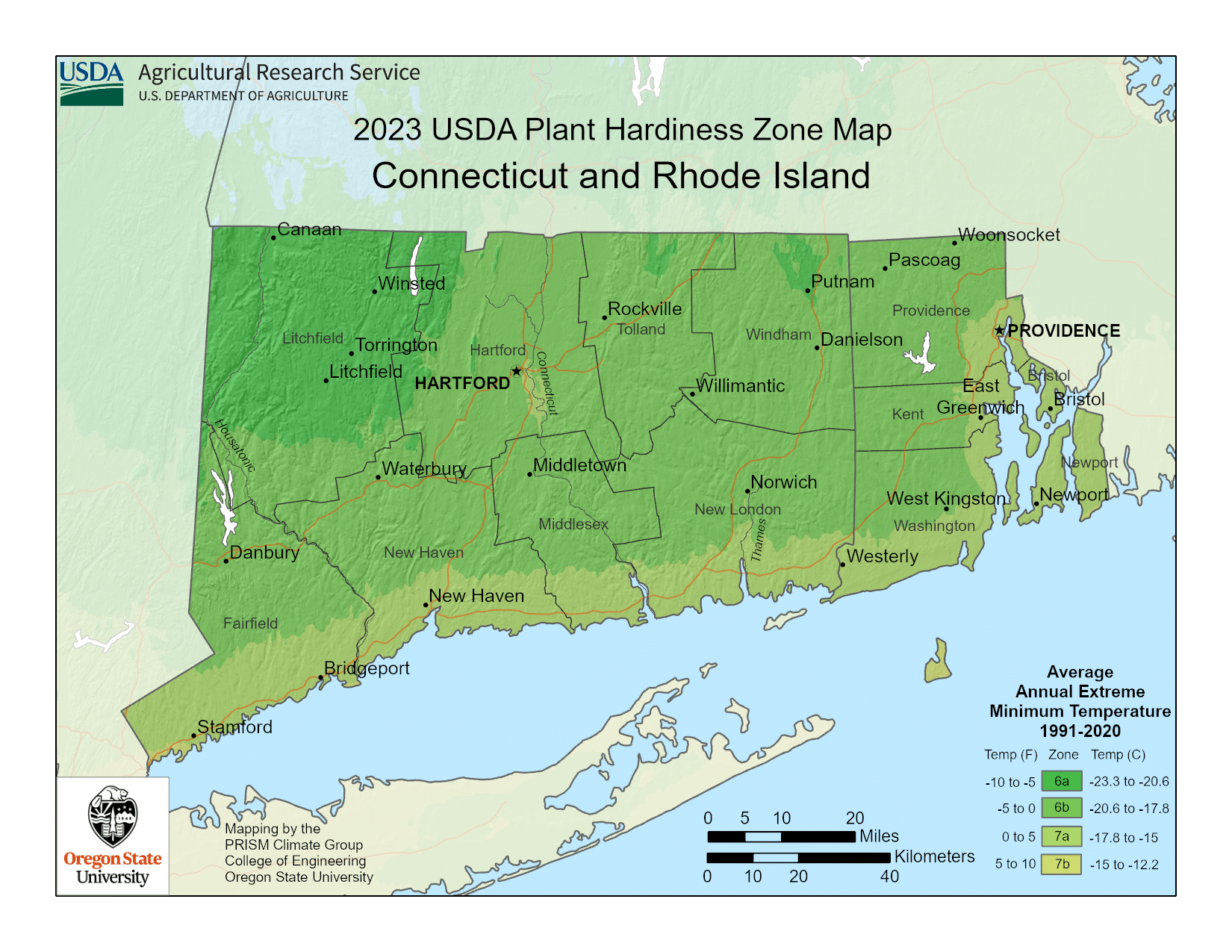Connecticut Plant Hardiness Zones
| USDA Hardiness Zone | Average Minimum Extreme Winter Temperature Range Fahrenheit (°F) Celsius (°C) | Average Last Frost Date Range In Spring (Beginning Of The Growing Season) | Average First Frost Date Range In Autumn (End Of The Growing Season) |
|---|---|---|---|
| 6a | -10°F to -5°F -23.3°C to -20.6°C | Mid-May | Early October |
| 6b | -5°F to 0°F -20.6°C to -17.8°C | Early to mid-May | Early to mid-October |
| 7a | 0°F to 5°F -17.8°C to -15°C | Late April | Mid to late October |
| 7b | 5°F to 10°F -15°C to -12.2°C | Mid to late April | Late October |
Connecticut Growing Conditions

Credit to Wikipedia
General Climate
Connecticut encompasses a transitional climate zone. The northern part of the state has a humid continental climate, and most of the southern and coastal portions are humid subtropical.
Humid continental climates experience:
- Cold winters
- Warm to hot and humid summers
- Four distinct seasons
- Year-round precipitation
Humid subtropical climate characteristics:
- Relatively mild winters
- Hot and humid summers
- Located on the southeastern portion of continents
- Small fluctuations between daily temperatures
Microclimates
USDA plant hardiness zones are an important starting point for your garden, but you’ll also need to consider microclimates.
Microclimates are areas where specific conditions create a climate different from the climate they’re situated in.
Buildings, fences, paved areas, or short hills and valleys can create these microclimates.
They can be as small as a space in your backyard or as large as a city.
In other words, learn about your local conditions from local experts to see if your garden falls into a microclimate.
Extreme Weather
Floods
Connecticut is vulnerable to flooding caused by coastal storms. Rivers are also prone to flooding due to snow melting in other connected areas of New England or during heavy rainfall.
Flooding in Connecticut can happen at any time of year.
If you have experienced flooding in your garden before or live in a flood plain, ensure your garden drains sufficiently, making changes to the grade if necessary.
You may also want to consider gardening in raised beds or containers or incorporating vertical garden techniques.
Nor’easters
Nor’easters are similar to blizzards and hurricanes, including powerful wind and precipitation. They move along the east coast of North America and are named so because their winds come from the northeast.
Nor’easters can form any time of year but tend to happen predominantly between September and April.
Aside from general emergency preparedness around your home and garden, there isn’t a lot you can do to prepare your garden for a Nor’easter. Be sure to check in with trees and shrubs after the storm has passed and prune away any damage as needed.
Ice Storms
Ice storms are winter storms. They have freezing rain that builds to a thickness of at least one quarter of an inch.
The result is a dangerous layer of slippery ice on everything, including roads and walkways. In addition to being slippery, the ice is also heavy. This can cause tree branches, powerlines, and even roofs to break under their weight.
Unfortunately, you can’t do much to protect your garden from ice storms (beyond general storm preparation). Usually, this won’t be an issue, though, since ice storms happen during the winter, and you likely won’t be growing during this time.
If your trees or shrubs sustain damage from ice storms, pruning them as soon as possible can help them survive.
Growing Season
Connecticut’s growing season is average length, depending on the region. Due to its relatively moderate climate, you’ll have success with a wide range of plants.
Start seeding your heat-loving, long-season plants indoors in the spring so they will be ready to harvest before frost.
In early spring, you can grow plants that prefer cooler temperatures (lettuce, peas, radishes, spinach, kale, etc.). When the heat of summer recedes, you can sow another succession to be enjoyed later in the fall.
Connecticut Gardening Tips

Choose The Right Plants
Planting native plants in your garden is always the best choice. You’ll have much better chances of successfully growing plants when doing so. That’s because those plants are better adapted to your area’s local conditions.
Also, choosing native plants helps preserve varieties only grown in your location. So, experiment a little!
Manage Your Water
Given Connecticut’s variable climate, consider using rain barrels to capture water for use during drier times.
Drip irrigation is another great way to manage water. It reduces water lost to evaporation, for example.
Organic mulch also helps plants retain water. This is in addition to insulating roots from extreme temperatures. It also suppresses weeds.
In wetter years, you will want to ensure good cleanliness in your garden, pruning as needed and disposing of decaying vegetation to avoid attracting pests.
Consult With Local Professionals
Consulting with local gardening professionals allows you to benefit from their experience with your area’s conditions, the plants that do well there, and overall best practices.
Connecticut Plant Suggestions

Trees
- White Oak (Quercus alba)
- Cucumber Magnolia (Magnolia acuminata)
- Red Maple (Acer rubrum)
Shrubs
- Mountain Laurel (Kalmia latifolia)
- Nannyberry (Viburnum lentago)
- Partridgeberry (Mitchella repens)
Flowers
- Cardinal Flower (Lobelia cardinalis)
- Trumpet Honeysuckle (Lonicera sempervirens)
- Pearly Everlasting (Anaphalis margaritacea)
Vegetables
- Carrots (Daucus carota)
- Beets (Beta vulgaris)
- Cucumbers (Cucumis sativus)
Herbs
- Parsley (Petroselinum crispin)
- Lovage (Lovisticum officinale)
- Tarragon (Artemisia dracunculus)
Spices
- Shagbark Hickory (Carya ovata)
- Spicebush (Lindera benzoin)
- Sumac berries (Rhus typhina)
Fruits
- Mulberry (Morus rubra)
- Apple ‘Idared’ (Malus domestica ‘Idared’)
- Cherry ‘Danube’ (Prunus cerasus ‘Danube’)
Succulents
- Adam’s Needle (Yucca filamentosa)
- Eastern Prickly Pear Cactus (Opuntia humifusa)
- Hens and Chicks (Sempervivum tectorum)
Disclaimer
Any of the above can change and is not exhaustive.
Treat anything above like a good starter guide. Then use that as a foundation as you consult with local gardeners, professionals, forecasts, guides, and organizations.

